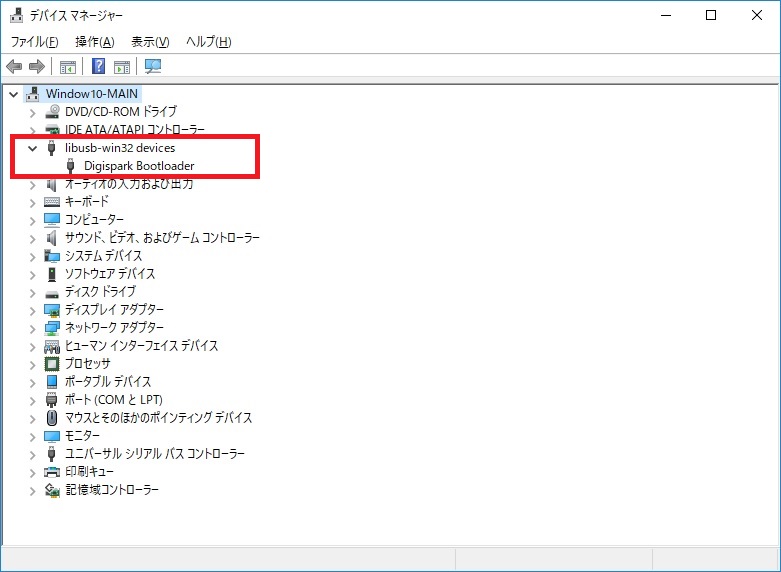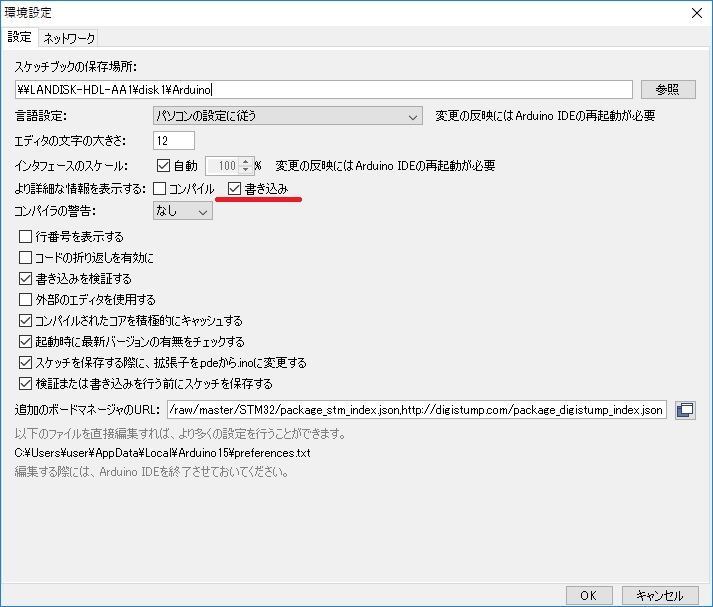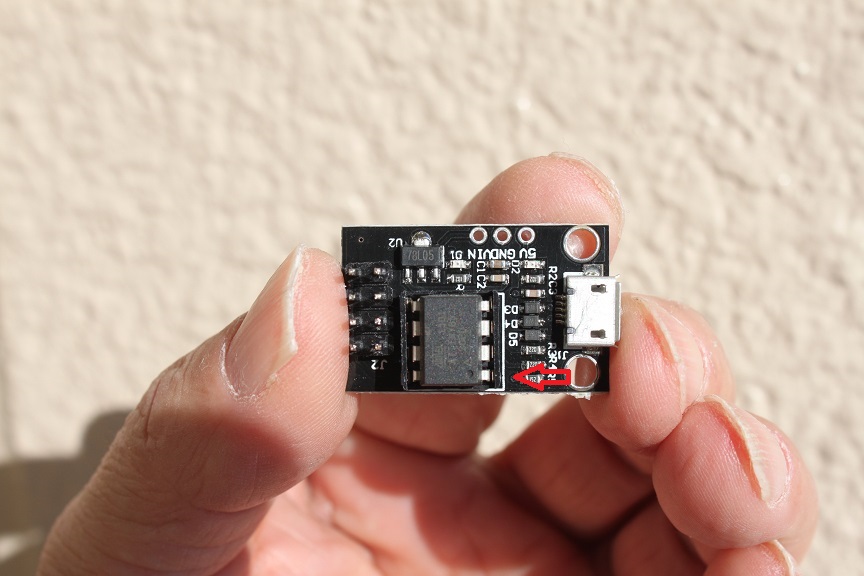

| C:\Users\user\AppData\Local\Arduino15\packages\arduino\tools\avrdude\6.3.0-arduino9/bin/avrdude
-CC:\Users\user\AppData\Local\Arduino15\packages\arduino\tools\avrdude\6.3.0-arduino9/etc/avrdude.conf
-v -pattiny85 -cstk500v1 -PCOM5 -b19200
-Uflash:w:C:\Users\user\AppData\Local\Temp\arduino_build_224837/blink.ino.hex:i
avrdude: Version 6.3, compiled on Jan 17 2017 at 12:00:53 Copyright (c) 2000-2005 Brian Dean, http://www.bdmicro.com/ Copyright (c) 2007-2014 Joerg Wunsch System wide configuration file is "C:\Users\user\AppData\Local\Arduino15\packages\arduino\tools\avrdude\6.3.0-arduino9/etc/avrdude.conf" Using Port : COM5 Using Programmer : stk500v1 Overriding Baud Rate : 19200 AVR Part : ATtiny85 Chip Erase delay : 400000 us PAGEL : P00 BS2 : P00 RESET disposition : possible i/o RETRY pulse : SCK serial program mode : yes parallel program mode : yes Timeout : 200 StabDelay : 100 CmdexeDelay : 25 SyncLoops : 32 ByteDelay : 0 PollIndex : 3 PollValue : 0x53 Memory Detail : Block Poll Page Polled Memory Type Mode Delay Size Indx Paged Size Size #Pages MinW MaxW ReadBack ----------- ---- ----- ----- ---- ------ ------ ---- ------ ----- ----- --------- eeprom 65 12 4 0 no 512 4 0 4000 4500 0xff 0xff flash 65 6 32 0 yes 8192 64 128 30000 30000 0xff 0xff signature 0 0 0 0 no 3 0 0 0 0 0x00 0x00 lock 0 0 0 0 no 1 0 0 9000 9000 0x00 0x00 lfuse 0 0 0 0 no 1 0 0 9000 9000 0x00 0x00 hfuse 0 0 0 0 no 1 0 0 9000 9000 0x00 0x00 efuse 0 0 0 0 no 1 0 0 9000 9000 0x00 0x00 calibration 0 0 0 0 no 1 0 0 0 0 0x00 0x00 Programmer Type : STK500 Description : Atmel STK500 Version 1.x firmware Hardware Version: 2 Firmware Version: 1.18 Topcard : Unknown Vtarget : 0.0 V Varef : 0.0 V Oscillator : Off SCK period : 0.1 us avrdude: AVR device initialized and ready to accept instructions Reading | ################################################## | 100% 0.02s avrdude: Device signature = 0x1e930b (probably t85) avrdude: NOTE: "flash" memory has been specified, an erase cycle will be performed To disable this feature, specify the -D option. avrdude: erasing chip avrdude: reading input file "C:\Users\user\AppData\Local\Temp\arduino_build_224837/blink.ino.hex" avrdude: writing flash (1970 bytes): Writing | ################################################## | 100% 2.77s avrdude: 1970 bytes of flash written avrdude: verifying flash memory against C:\Users\user\AppData\Local\Temp\arduino_build_224837/blink.ino.hex: avrdude: load data flash data from input file C:\Users\user\AppData\Local\Temp\arduino_build_224837/blink.ino.hex: avrdude: input file C:\Users\user\AppData\Local\Temp\arduino_build_224837/blink.ino.hex contains 1970 bytes avrdude: reading on-chip flash data: Reading | ################################################## | 100% 1.34s avrdude: verifying ... avrdude: 1970 bytes of flash verified avrdude done. Thank you. |
| C:\Users\user\AppData\Local\Arduino15\packages\arduino\tools\avrdude\6.3.0-arduino9/bin/avrdude
-CC:\Users\user\AppData\Local\Arduino15\packages\arduino\tools\avrdude\6.3.0-arduino9/etc/avrdude.conf
-v -pattiny85 -cstk500v1 -PCOM5 -b19200 -Uflash:w:C:\Users\user\AppData\Local\Temp\arduino_build_224837/blink.ino.hex:i |
| C:\Users\user\AppData\Local\Arduino15\packages\arduino\tools\avrdude\6.3.0-arduino9/bin/avrdude
-CC:\Users\user\AppData\Local\Arduino15\packages\arduino\tools\avrdude\6.3.0-arduino9/etc/avrdude.conf
-v -pattiny85 -cstk500v1 -PCOM5 -b19200 -Uflash:w:C:\micronucleus-master\firmware\releases\t85_default.hex:i
-U lfuse:w:0xe1:m -U hfuse:w:0xdd:m -U
efuse:w:0xfe:m |

| P3 |
P4 |
| Gnd |
P5 |
| P0 |
P2 |
| 5V |
P1 |
| /* digisparkのPin Map All pins can be used as Digital I/O Pin 0 → I2C SDA, PWM (LED on Model B) Pin 1 → PWM (LED on Model A) Pin 2 → I2C SCK, Analog In Pin 3 → Analog In (also used for USB+ when USB is in use) Pin 4 → PWM, Analog (also used for USB- when USB is in use) Pin 5 → Analog In */ int numpin = 5; void setup() { //All pins are capable of Digital output, though P5 is 3 V at HIGH instead of 5 V for(int i=0;i<numpin;i++) pinMode(i, OUTPUT); //0 is P0, 1 is P1, 2 is P2, etc. - unlike the analog inputs, for digital outputs the pin number matches. } void loop() { for(int i=0;i<numpin;i++) { digitalWrite(i,HIGH); //Turn the pin HIGH (5 V) delay(1000); digitalWrite(i,LOW); //Turn the pin LOW (GND) delay(1000); } } |